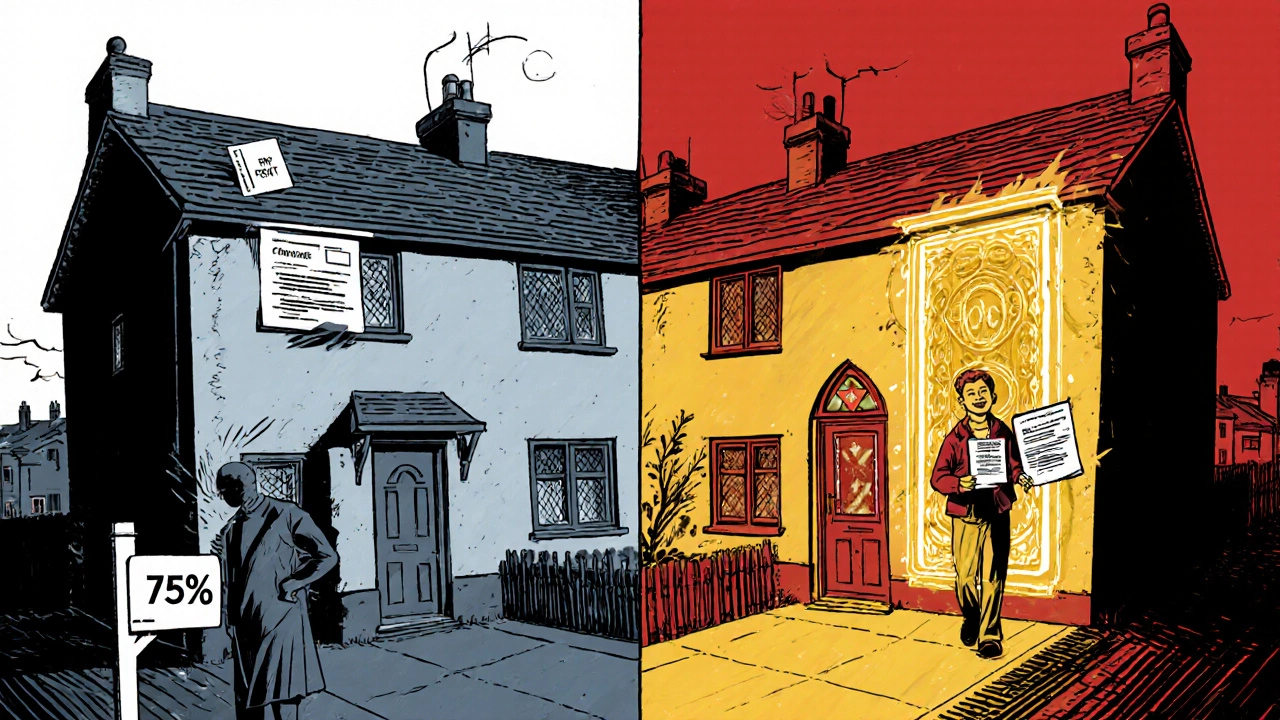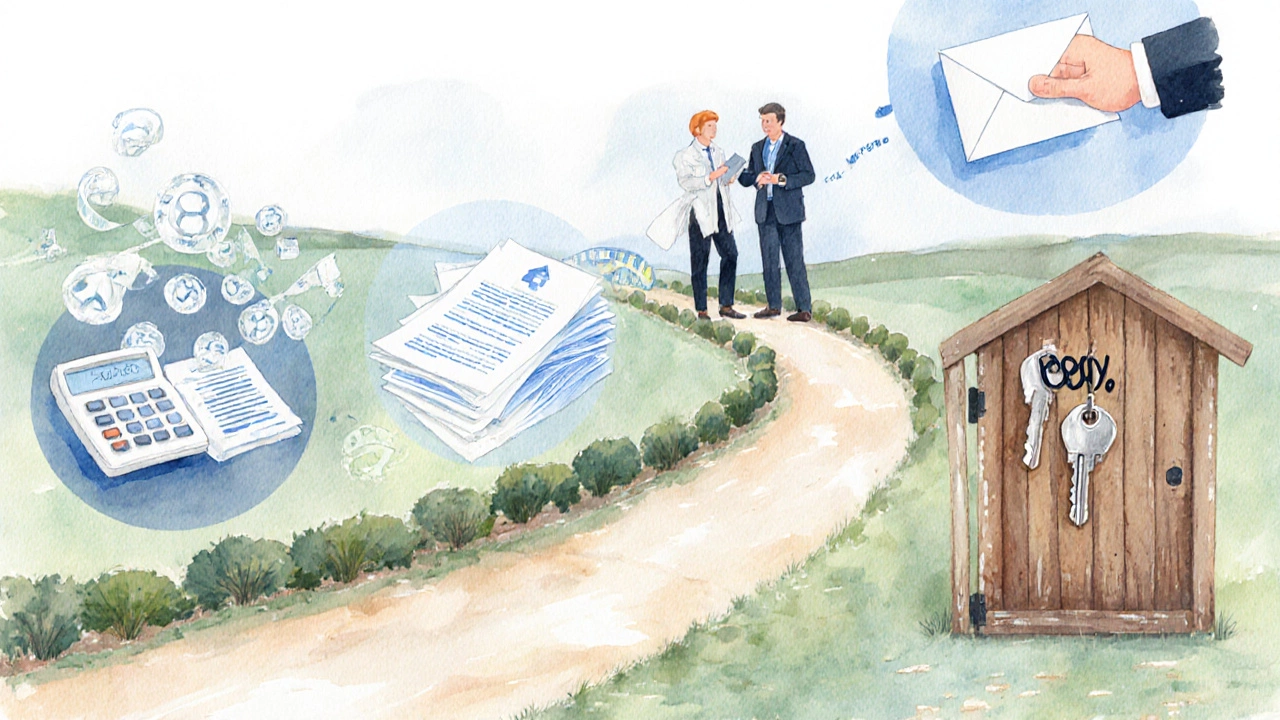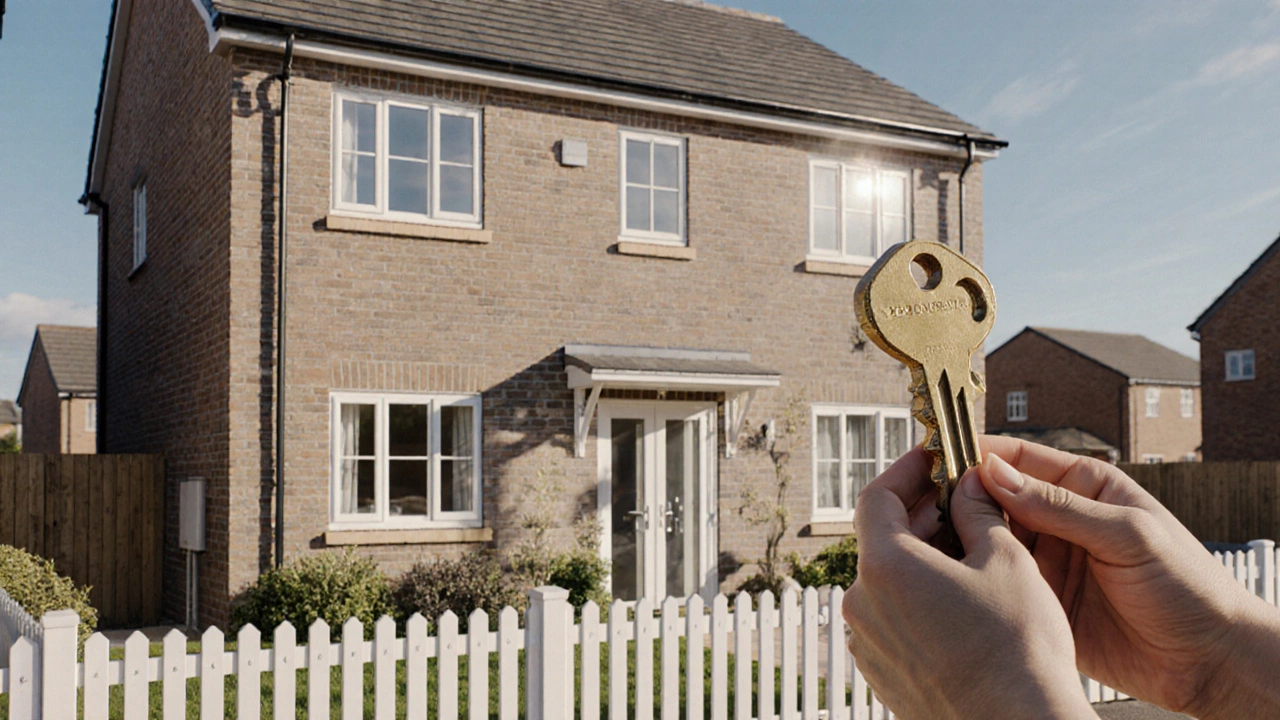Stamp Duty Calculator
Calculate your stamp duty land tax based on current UK rates. This tool helps you understand the upfront costs of purchasing a property in the UK.
When you start looking at shared‑ownership schemes, you’ll see terms like “75% share” or “rent on the remaining 25%.” But what if you could own the whole place? That’s what 100% ownership promises - you hold the entire legal title, just like buying a house outright. Below we break down exactly what that means, how it stacks up against other ownership models, and what you need to watch out for before signing on the dotted line.
What is 100% ownership?
100% ownership is full legal title to a property, meaning you own the entire building and land without any shared‑equity partner. In practice, you are responsible for every aspect of the home - mortgage payments, maintenance, council rates, and any future sale proceeds. There’s no rent to a housing association, and you can remodel or refinance without seeking permission from a co‑owner.
How does it differ from shared ownership?
Shared ownership is a hybrid model where you buy a share (commonly 25%‑75%) of a property and pay rent on the remaining portion to a housing association or local authority. The key contrasts are:
- Equity share: You own a fraction versus the whole.
- Rent: Shared owners pay rent on the unowned share; 100% owners do not.
- Staircasing: Shared owners can gradually purchase additional shares; 100% owners start there already.
Because you hold the title outright, 100% ownership gives you the freedom to sell any time, whereas shared owners often need the housing association’s consent.
Legal structures: leasehold vs freehold
Even with full ownership, the property can be either leasehold or freehold. The distinction matters for long‑term costs and control.
Freehold is the outright ownership of both the building and the land it sits on, with no time limit. You can generally alter the property or sell it without needing landlord approval.
Leasehold is ownership of the building for a fixed period (often 99 or 125 years) while the land is owned by a separate landlord. When the lease runs out, ownership reverts to the landowner unless you extend or purchase the freehold.
Most new‑build shared‑ownership homes are leasehold, but a 100% ownership buyer can negotiate for a freehold or a long‑term lease, which reduces future ground‑rent expenses.

Financing the full purchase
Mortgage is a loan secured against a property that you repay over an agreed term, typically 25‑30 years. When you go for 100% ownership you’ll need a larger mortgage than a shared‑ownership buyer who only finances a portion of the price.
Key financing points to compare:
- Deposit size: Lenders usually require at least 5%‑10% of the purchase price as a deposit. For a £300,000 home, that’s £15,000‑£30,000.
- Loan‑to‑value (LTV): Higher LTV means higher interest rates and stricter affordability checks.
- Eligibility: Income, credit score, and existing debts impact how much you can borrow.
Because you own the whole property, you may qualify for better rates once your equity builds, but the initial monthly payment will be larger.
Up‑front costs: stamp duty, legal fees and more
Stamp duty is a tax paid on property purchases in the UK, calculated on the purchase price in bands. 100% owners pay the full stamp‑duty bill, while shared owners only pay on the portion they buy, sometimes benefiting from reduced rates.
Typical up‑front costs for a 100% purchase (on a £300,000 home) include:
- Stamp duty: £5,000 (assuming standard rates)
- Legal conveyancing: £1,200‑£1,800
- Survey and valuation: £400‑£800
- Mortgage arrangement fee: £0‑£500
These costs add up quickly, so budgeting ahead is essential.
Pros and cons of full ownership
Advantages
- Complete control over the property - you can remodel, rent out, or sell whenever you wish.
- No ongoing rent payments, which can be costly over time.
- All future capital growth stays with you.
- Easier to refinance or remortgage because the lender sees you as a sole owner.
Disadvantages
- Higher upfront deposit and mortgage repayments.
- Full responsibility for maintenance, insurance, and council tax.
- Greater exposure to market downturns - you bear the entire loss if prices fall.
- If the property is leasehold, you still face ground‑rent and lease‑extension costs.

Step‑by‑step guide to achieving 100% ownership
- Assess affordability: Use a mortgage calculator, factor in deposit, stamp duty, and monthly repayments.
- Choose the right property type: Freehold is preferable, but a long lease (≥99 years) is acceptable if you plan to stay long term.
- Secure a mortgage: Shop around for the best rate; consider a fixed‑rate for the first 2‑5 years.
- Arrange a survey: Identify structural issues early; a full structural survey costs about £600‑£1,200.
- Engage a solicitor: They will handle the conveyancing, check the title, and ensure no hidden covenants.
- Pay stamp duty and fees: Transfer the funds through your solicitor’s client account.
- Complete the exchange: Sign the contract, pay the deposit, and set a completion date.
- Move in and manage: Set up insurance, arrange utilities, and start budgeting for regular upkeep.
Once you own 100% of the property, you can start building equity faster or consider renting a portion out for extra cash flow.
Comparison of common ownership models
| Model | Percent owned | Title holder | Typical upfront costs | Ongoing rent? |
|---|---|---|---|---|
| 100% Ownership | 100% | Buyer (freehold or leasehold) | Full stamp duty, mortgage deposit, legal fees | No |
| Shared Ownership | 25%‑75% | Buyer + Housing association (leaseholder) | Partial stamp duty, deposit on share, admin fees | Yes - on the un‑owned share |
| Leasehold (full purchase) | 100% | Buyer (leasehold) | Same as 100% ownership + possible ground rent | No (but ground rent may apply) |
Frequently asked questions
Can I convert a shared‑ownership home to 100% ownership?
Yes, through a process called “staircasing.” You buy additional shares from the housing association until you own 100%. Each step incurs a new valuation and legal fees.
Is a leasehold property less valuable than a freehold?
Generally, yes. Lease length, ground rent, and extension costs can lower resale value. A long lease (90+ years) narrows the gap.
Do I still need a mortgage if I have 100% ownership?
Only if you’re borrowing to fund the purchase. Some buyers pay cash (e.g., via savings or inheritance) and own the home outright without any loan.
How much stamp duty will I pay on a £250,000 fully owned house?
At current rates, the first £125,000 is tax‑free, the next £125,000 is charged at 2%, so you’d pay £2,500.
Is 100% ownership always the best choice?
Not necessarily. If you lack a large deposit or want lower monthly payments, shared ownership can be a stepping stone. Weigh your financial situation, long‑term plans, and risk tolerance.
